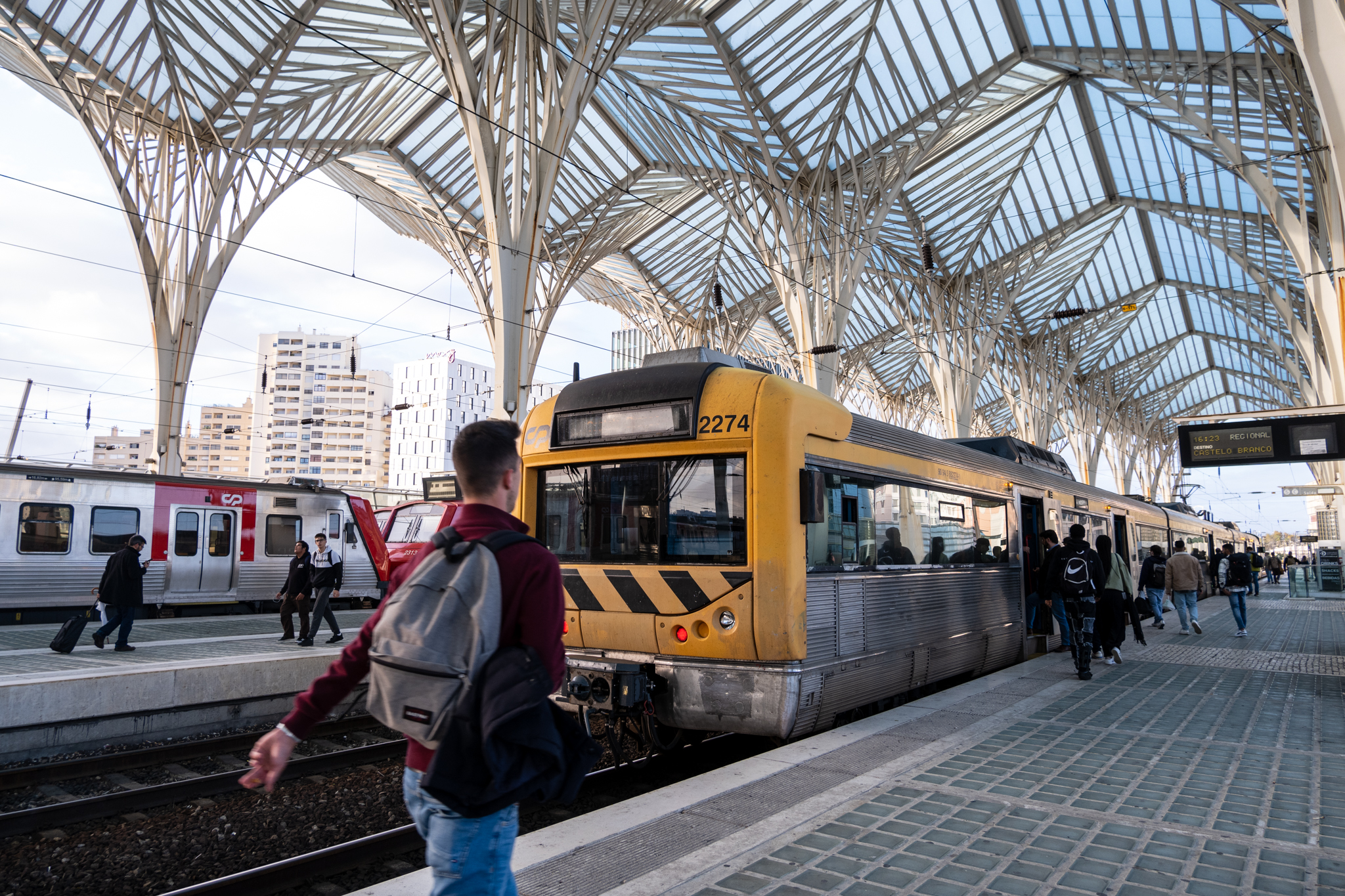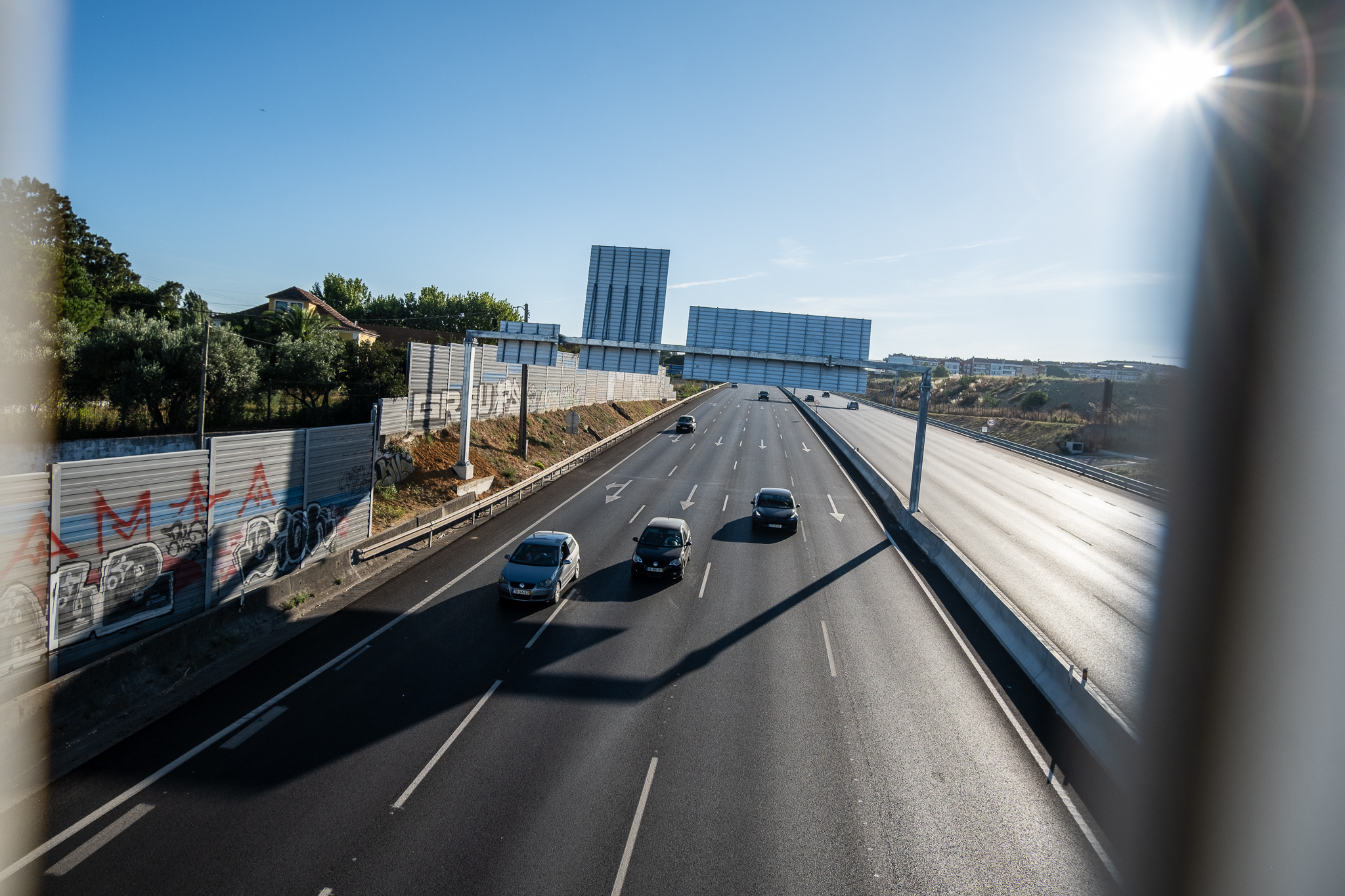The National Railway Plan has several new features for the Lisbon Metropolitan Area (AML). These investments are planned for a time horizon of up to 2050.

It is a plan with the objective of guiding the country's investments in railroads from now on, so that they are not defined at the mercy of the opportunities of EU funds or the desires of each Government. The National Railway Plan (NFP) has finally been presented; this Thursday, November 17th, the result of one year of work.
Not everything is surprising news: the reactivation of the deactivated sections of the Alentejo and Douro Lines, or the re-inclusion of Viseu and Bragança in the national railway network were already expected. Nor is it a surprise that Porto's Sá Carneiro Airport will be connected to the railroad and that the Leixões Line will be reopened, also in the North, for example. But there are several new details, which had not yet been properly addressed in previous presentations.
You can download and consult the National Railway Plan in its entirety here below. Right below, we present the main highlights of this document.
In the Lisbon Metropolitan Area
Starting with the Lisbon Metropolitan Area (AML), the National Railway Plan now presented foresees the following investments:
- Loures line: a new line starting in Lisbon, cutting through the municipality of Loures and connecting directly to the Linha do Oeste to reduce travel times to the West zone by 20 or 30 minutes. There is the possibility, taking advantage of this new line, to put direct trains between Torres Vedras and Setúbal over the 25 de Abril Bridge;
- Direct connection between Sintra and Setúbalwith the new crossing of the Taguswhich will also put Moita and Barreiro closer to Lisbon;
- Direct connection between Cascais and Azambujawith the connection of the existing Belt and Cascais Lines and the already planned new underground railway station in Alcântara. With the expansion of the Metro to Alcântara, already underway, this area could become a major transportation interface in the city;
- Improve the connectivity between the railroad and the Lisbon Metrowith a new train station in Chelas-Olaias with a new interface with the Red Line at the Olaias Metro station (planned investment), the connection between the Roma-Areeiro railway station and Areeiro Metro station, and an interface between Rossio railway station and Rossio Metro station (currently it only has a connection with Restauradores Metro station);
- Affirm the Belt Line as a true "5th subway linestarting with "dramatically improve and standardize the communication of existing services, regardless of mode and operator, especially when it comes to high-capacity transport such as rail and Metro". At the same time, "extend the schedule of trains serving Alcântara-Terra station on weekends and holidays". In a second phase, reinforce the frequencies of the current services, so that the Belt Line has 15 trains/hour on weekdays and nine trains/hour on weekends and holidays.
In the NFP, we read that AML's current railway network has a "radial structure"which "makes it difficult to travel outside of Lisbon". In other words, it is a network with "limited use for mobility within the municipalities, including Lisbon". Therefore, there is a "high frequency and occupancy at peak hours"but a "low frequency and occupancy the rest of the day". The new Plan proposes "conversion of radial connections into diametrical connections, facilitating fast connections between municipalities on the outskirts of AML" and a "high frequency throughout the day".
"Of the 175 million train trips made in the country, 134 million are made on Lisbon's suburban trains", one can read in the presentation of the National Railway Plan, where it is also mentioned that, although the most densely populated regions are concentrated along the railway lines, this does not happen with Loures and Odivelas -. as Lisboa Para Pessoas showed with this data analysis.
A fundamental part of the Lisbon Metropolitan Area's railway future is the new crossing of the Tagus (the long-awaited Third Crossing of the Tagus - TTT), between Chelas and Barreiro, and which not only may allow trains between Sintra and Setúbal, but also reduce by at least 30 minutes the access from Lisbon to the Alentejo and Algarve.
In the rest of the country
In relation to the rest of the country, the National Rail Plan proposes:
- Trás-os-Montes line: new line to link Porto, Vila Real and Bragança, which, to be competitive with the automobile, should place Vila Real less than 1 hour from Porto and Bragança less than 2 hours from the Invicta city;
- New line Aveiro - Viseu - Guarda - Vilar Formosowhich reintroduces Viseu to the national railway network, allowing access to the future High Speed Line. This new line will also make it possible to put Lisbon within 3 hours of Madrid, assuming the investments on the Spanish side are complete;
- Reopening of the Alentejo Line in its entiretycreating a redundancy to the current South Line and bringing Beja closer to the Algarve. Currently, the Alentejo Line connects Lisbon to Évora and Beja, but if you are in Beja, for example, if you want to go south you now have to go up to the capital and back down again;
- Reopening of the Douro Line in its entiretyIt will reactivate the 28-kilometer link between Pocinho (where the Line ends today) and Barca d'Alva, and there may be a link to Spain here (but it depends on the willingness of the neighboring country to reactivate its part). An IP study already conducted says that 74.7 million Euros will be needed to reopen the Douro Line in this section;
- High Speed Link to the South, connecting Lisbon to the Algarve. There are two alternatives under study: the modernization of the current South Line, reducing the trip by about 30 minutes; a new axis that includes Evora, Beja and Faro and that allows a trip in less than 2 hours. A direct link could be created in the Lisbon area to connect the High Speed North and South without passing through the capital, taking advantage of this possible new line to connect the future Lisbon Airport;
- Expansion of the Mondego Mobility System and reactivation of the train to Cantanhede: The first phase of the Mondego Mobility System (SMM), also known as Metro Mondego, is under construction in Coimbra. metrobus that will re-approach Lousã to Coimbra, more than 10 years after the closure of the Lousã branch line. But in a second phase, the SMM can cross the Mondego and connect Coimbra to Cernache and Condeixa-a-Nova. As for Cantanhede, the reactivation of the railway stretch between this city and Pampilhosa is planned, allowing a direct connection to the current suburban service of Figueira da Foz.
- Expand and consolidate railroad tourismthrough the Douro, Beira Baixa, Sintra and Cascais lines ("they connect Lisbon to two locations with a high demand for beach and heritage tourism within the Metropolitan Area itself, having, in the case of the Cascais Line, a landscape interest in itself"), of the Vouga and also the Corgo - "should it be considered to be partially reopened".
- Algarve Mobility Systema metrobus system to complement the current Algarve Line to serve cities and areas beyond the direct reach of the train, such as Vila do Bispo, Albufeira, and Quarteira, and also Faro Airport.
- Night and International Trains: the NFP provides that "the first measure to be taken, in this context, is the resumption of the Sud Express service"between Lisbon and Paris, allowing a trip in one night and one morning. There are also planned night connections between Lisbon and Madrid, between Lisbon and Barcelona, between A Coruña and Faro, and between Lisbon, Barcelona and Valencia ("an axis worth studying for the creation of such services").
In the Metropolitan Area of Porto
In relation to Porto and the Northern region:
- reactivation of the Leixões Line and new connection to Sá Carneiro AirportThis will allow the extension of the suburban and regional services of the Aveiro Line;
- inclusion of the Vouga Line in Porto's suburban networkwith frequent services at least at its two ends;
- Sousa Valley Lineto connect Porto to Paços de Ferreira and Felgueiras;
- Cávado-Ave Light Mobility Systema system of metrobus and/or light rail to close the mesh of the so-called Quadrilateral of Minho, connecting the ends of the heavy rail network, that is: Póvoa de Varzim - Famalicão - Guimarães - Fafeon the one hand, and Braga - Guimarãeson the other. It is intended that this system can have a "evolutionary solution, with a first phase in road mode, foreseeing future evolution to light rail";
- and also connection between Porto and Amarante with the future Trás-os-Montes Line; the creation of services between Porto and Barcelos; and become Braga the terminal for Regional trains in the Minho region. According to the NFP, "after the creation of the suburban services between Porto and Barcelos, it is proposed that, with the construction of a concordance in Nine, the Regional services of the Minho Line, coming from Viana do Castelo, could end up in Braga".
A state of play
The National Railway Plan takes into account the projects for the recovery and modernization of the existing network that are already underway or planned, namely:
- a new Évora-Elvas linewhich will already allow the creation of high speed direct between Lisbon and Madridand the Intercity extension to Elvas - in progress;
- a Mealhada concordancewhich will allow direct Intercity connections between Porto and Beira Interior (Castelo Branco, Covilhã, Guarda) - in progress;
- a electrification from Algarve Line, from West Line (between Meleças and Caldas da Rainha) and the Douro Line (between Marco de Canaveses and Régua) - in progress;
- the new Lisbon-Oporto High Speed Linewhich will free up capacity on the North Line, shorten the distances between the country's two largest cities, and also bring the coastal and inland regions closer together;
- the future High Speed Line between Porto and Vigo e between Braga and Vigo- in project.
- a conclusion of the electrification of the existing network - in project.
With the completion of the electrification of the existing network, it is proposed Intercity service extension to Portalegre and the resumption of direct long-haul services between Lisbon and Beja. The NFP also proposes a New Intercity train route between Lisbon and Valença with frequent services and the creation of new services and reduction of travel times in the access from Lisbon/Porto to Beira Alta and Oestewith the use of the future Lisbon-Oporto High Speed Line.
In a short diagnosis, the NFP identifies that although the current railway network covers the most populated areas of the country - with 82% of the population living less than 15 minutes from a station or halt - "some lines have no passenger service, others have poor service", e "some territories don't have access to the network". The current High Speed network with the Alfa Pendular service (which circulates at a maximum of 220 km/h) is limited to the Braga - Faro axis "with limited supply to the South"Intercity and Interregional services operate "with no cadenced schedules and limited supply on the connections to Beira Interior, Oeste, Alentejo and Algarve"; the travel times are, "generally uncompetitive"; and there is a "almost non-existent cross-border connections".
In the final scenario, the National Rail Plan wants the country's 10 largest cities to be integrated with High Speed rail servicesIn addition, it is expected that there will be several connections to Spain from all over the territory, and new intercity services (Intercidades and Interregional) with "frequent and competitive car connections to regionally relevant urban centers". Above all, the NFP intends "to ensure connection with high quality service to the 28 urban centers of regional relevance, which include all district capitals, enhancing their development".
The execution of this Plan, which has an indicative time horizon of 2050, also aims at the end of all domestic air connections in mainland Portugal. A modal shift to rail is also intended: when it comes to passenger transport, from 4.6% to 20% train modal share. You can download the full presentation here:







